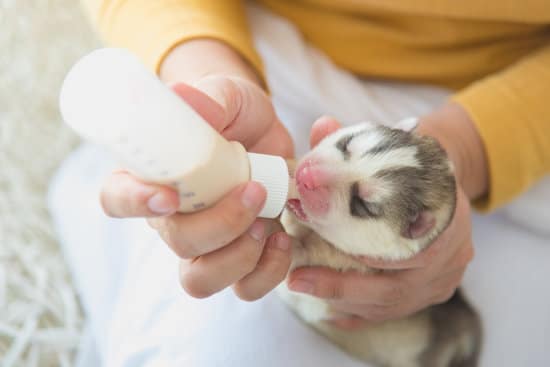Pregnancy is an exciting time in anyone’s life, and caring for a pregnant dog while exciting can also be nerve racking even after her puppies have been born. There are many things you need to know to help your pup after the birth. One of these things is milk fever in dogs, a common condition that can endangers the lives of nursing mothers. What is milk fever, and can you prevent it? We have all the information you need to know about this life threatening condition.
What is milk fever?
Milk fever in dogs, also known as canine eclampsia or lactational hypocalcemia, is a condition that can develop after whelping (giving birth) to the nursing mother. During lactation (producing milk) calcium is transfer from the mother to her puppies through her milk. Usually this isn’t a problem, as the mother has access to calcium from her diets as well as from calcium stores in her body (such as her bones). However, milk fever can occur when large amounts of calcium are drained from the mother’s system into her milk, which exceeds her ability to replace this loss resulting in life-threatening drop in blood calcium levels.
Generally, milk fever occurs within the first two to four weeks of lactation. However, it can be seen around the time of whelping and in some cases during pregnancy, and even up to six to eight weeks after the birth of a litter.

What causes milk fever in dogs?
While milk fever is caused by the excessive loss of calcium, the condition can also be caused and exacerbated by a few other factors, such as:
- Receiving a non-balanced diet, particularly one lacking in calcium
- Excessive calcium supplementation prior to giving birth
- When milk production is high, their body can’t keep up with the demand of calcium to produce milk
- Hormonal problems with the parathyroid gland, causing a disruption in normal calcium levels
- Low levels of albumin in the blood which can cause a disruption in the transportation of calcium
- Some dogs are prone to producing milk too rapidly
Are there dogs predisposed to developing milk fever?
Milk fever is commonly seen in small breed dogs nursing a large number of puppies. Breeds commonly affected include Chihuahuas, English Setters, Miniature Pinschers, Shih-Tzus and Miniature Poodles. But no matter the size of breed all dogs can develop this condition.
There are dogs who are more at risk of developing the condition. Dogs who have previously had milk fever will most likely get it again in all subsequent litters. Also, at high risk of developing milk fever are daughters from mothers who had the condition.
What are the signs and symptoms?
There are a number of signs and symptoms associated with milk fever. At the beginning stages, signs are usually subtle, but progress rapidly and become more severe.

- Restlessness
- Heavy panting
- Drooling
- Stiff movements (known as tetany)
- Reduced appetite
- Vomiting
Signs soon progress to include:
- Loss of coordination
- Muscle tremors
- Inability to stand
- Seizures
- Hyperthermia (high body temperature)
- In severe cases, excessive tremors can cause heat stroke
Milk fever is a life threatening condition and if left untreated can result in the death of the mother. The condition can turn fatal within 30 to 60 minutes of signs appearing.
How is it treated?
If you see any of the above signs and symptoms, or suspect your pregnant or nursing dog may have milk fever requires immediate veterinary attention. If treated early, the chances of recovery are high.
Remove the puppies, keeping them somewhere warm and supervised and take your dog to your vet. Once you arrive, your vet will perform a blood test to confirm the diagnosis and determine the blood calcium level and any other underlying problems. Treatment will include:
- Calcium will be slowly administered intravenously under close monitoring as it can cause changes to heart rhythms
- Intravenous fluids to treat shock and dehydration
- Medication to control seizures
- Active cooling especially if your pet’s temperature is high
In most cases, recovery occurs within a few hours following treatment and will not require more than 12 hours in hospital. In severe cases, prolonged hospitalisation may be needed to ensure a relapse doesn’t occur. Your dog will also be prescribed calcium supplements for use at home home, and the puppies will need to be weaned hand fed.
Can milk fever be prevented?
If your dog is pregnant, you can help prevent her from developing milk fever by:
Using a high quality puppy food diet for the mother during lactation to provide adequate calcium
- Providing a high quality and balanced adult diet throughout her pregnancy
- Not giving calcium supplements during her pregnancy as it stops the body from recognising the blood calcium levels are low and interferes with the body’s ability to release calcium from the bones
- Assisting the mother by hand feeding the pups during part of the day to give her body time to replenish her calcium levels
If you are concerned the size of your dog’s litter may put her at risk of developing milk fever, or you have any other concerns, speak to your vet to work out a plan to prevent the condition from occurring.
If your pet is ill or injured, visit your closest Animal Emergency Service hospital or your local vet immediately.


 Using a high quality puppy food diet for the mother during lactation to provide adequate calcium
Using a high quality puppy food diet for the mother during lactation to provide adequate calcium